Universal Chalcidoidea Database
A key to families - continued
Diagnostic characters | Morphology and terminology | Notes on famalies
27. Antenna with six funicle segments (Figs 44,45)
28
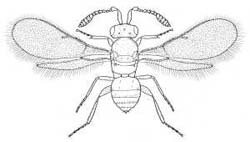 |
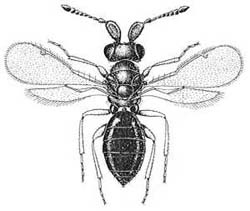 |
| Fig. 44 | Fig. 45 |
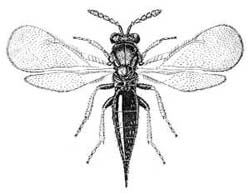 |
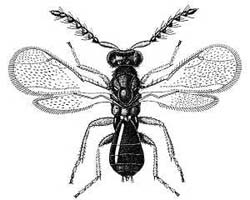 |
| Fig. 46 | Fig. 47 |
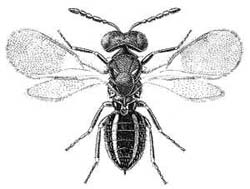 |
|
| Fig. 48 | |
-. Antenna with not more than 5 funicle segments (Figs 46-48)
29
28. Clava 6-segmented (Fig. 44)
-. Clava with not more than 3 segments (Fig. 45) (males only)
29. Gaster distinctly constricted at its junction with propodeum (Figs 49-51); fore wing often with postmarginal and stigmal veins long and distinct, but in some (eg Tetrastichinae) postmarginal vein almost absent(Fig. 52); body frequently at least partly metallic; notauli, if complete normally distinctly curved; fore tibial spur usually straight
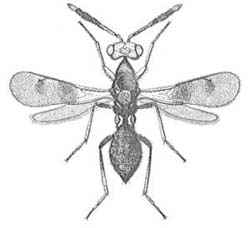 |
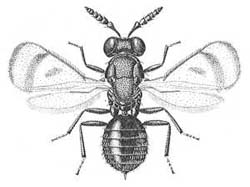 |
| Fig. 49 | Fig. 50 |
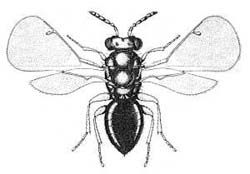 |
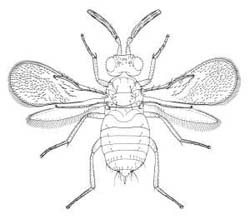 |
| Fig. 51 | Fig. 52 |
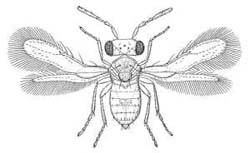 |
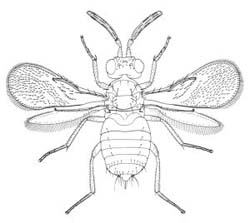 |
| Fig. 53 | Fig. 54 |
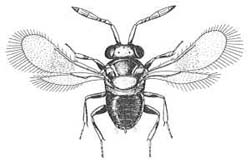 |
|
| Fig. 55 | |
-. Gaster, at its base, about as broad as propodeum and not distinctly constricted at this point (Figs 53-55); fore wing with postmarginal vein absent or almost always so and stigmal vein very short; body non-metallic, usually black, dark brown or yellowish; notauli complete and straight; fore tibial spur curved
30. Antenna with a very long unsegmented club, female funicle composed of three or four indistinct and strongly transverse funicle segments, male funicle with from one to four anelliform segments (Figs 56-57); body mostly shining black (Figs 57,58), occasionally yellow, red or brown; gaster sessile; axillae not distinctly marked off from the scutellum, the two together forming a strongly transverse band about three times as broad as long; propodeum with a large central triangular area which is shiny (Fig. 56)
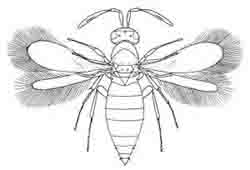 |
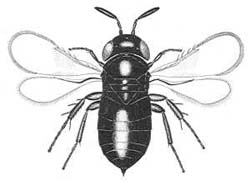 |
| Fig. 56 | Fig. 57 |
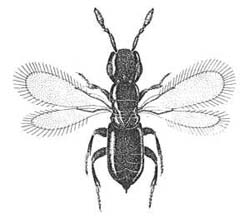 |
|
| Fig. 58 | |
-. Antenna not as above; males occasionally with clava long and unsegmented, but then funicle composed of either two or six segments; body varying from yellow to black or metallic blue or green; scutellum normally shield-shaped and about as long as broad; propodeum variable, usually without a defined, central, shiny, triangular area
31
31. Mesopleuron convex and undivided, relatively enlarged and longer than high (Figs 59-61)
32
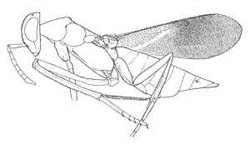 |
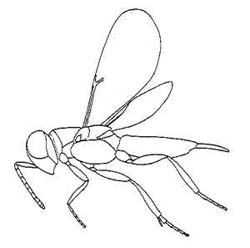 |
| Fig. 59 | Fig. 60 |
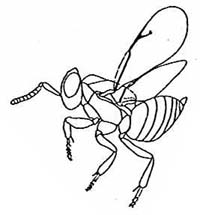 |
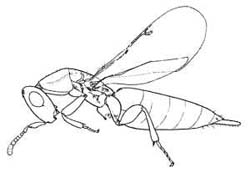 |
| Fig. 61 | Fig. 62 |
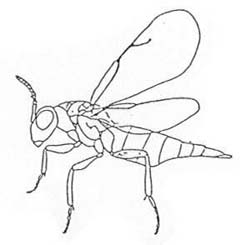 |
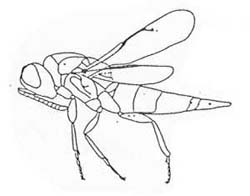 |
| Fig. 63 | Fig. 64 |
-. Mesopleuron not distinctly convex and not unduly enlarged, mostly higher than long and divided into mesepisternum and mesepimeron, the two parts often with different sculpture (Figs 62-64)
32. Thorax in profile with mid coxa inserted about level with middle of mesopleuron or even slightly anterior to this (Fig 65); fore wing with marginal vein short and usually not more than 3X or 4X as long as broad (Figs 66,67), although it may rarely be more than 10X as long as broad
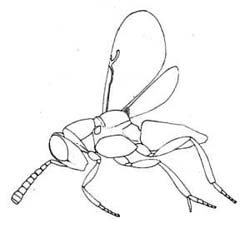 |
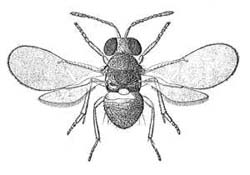 |
| Fig. 65 | Fig. 66 |
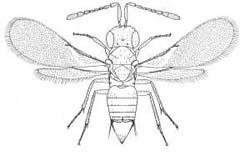 |
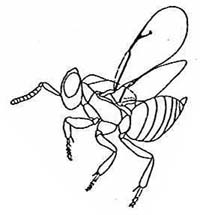 |
| Fig. 67 | Fig. 68 |
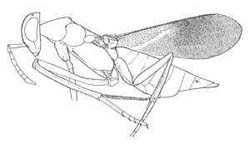 |
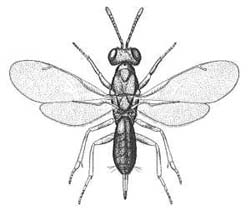 |
| Fig. 69 | Fig. 70 |
-. Thorax in profile with mid coxa inserted about level with posterior margin of mesopleuron (Figs 68,69); fore wing with marginal vein always at least 6X or 7X as long as broad (Figs 68-70)
Last updated 07-Jun-2004 Dr B R Pitkin